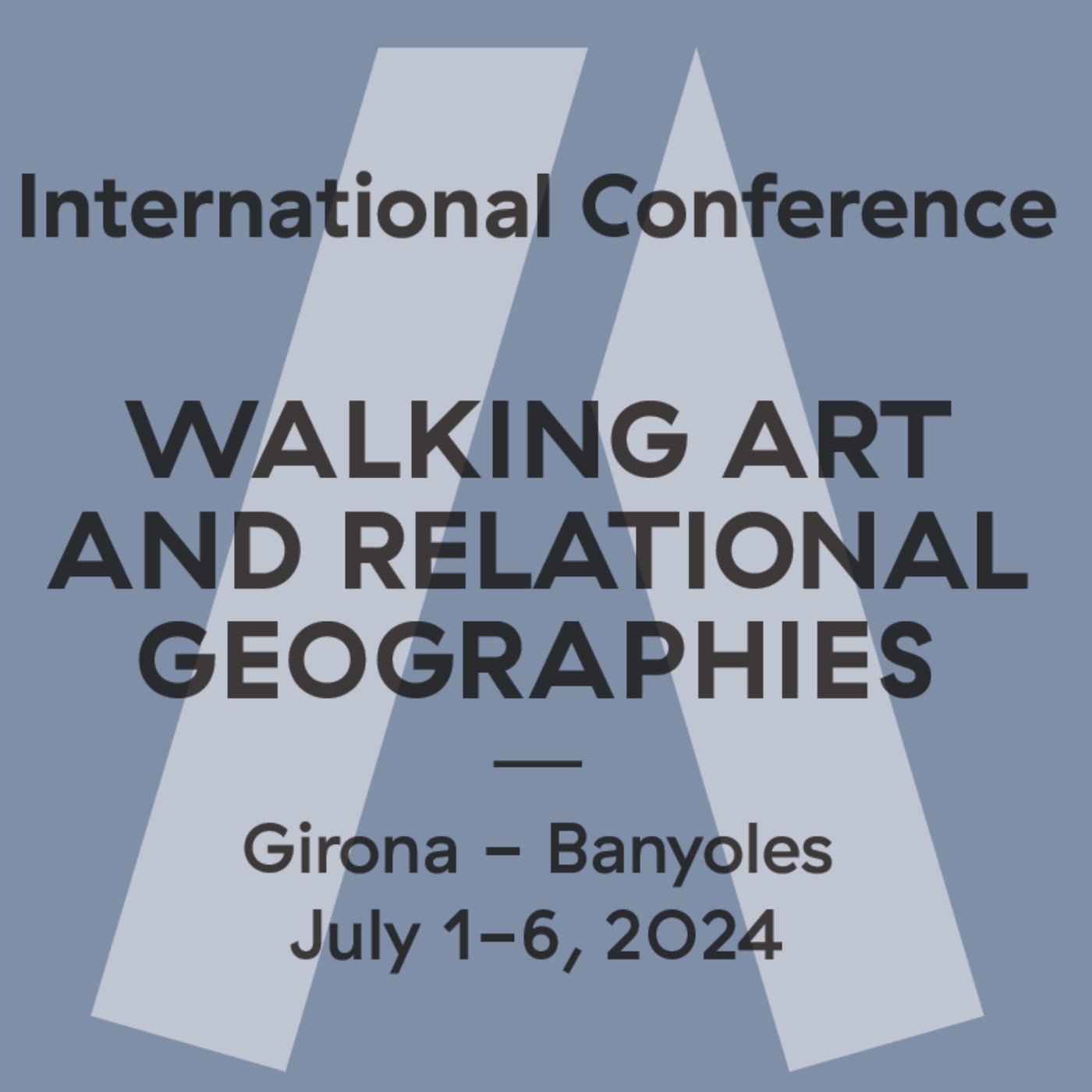Walking Art and Relational Geographies (2024)
Walking Art and Relational Geographies: Transhumance, nomadisms and migrations. Girona & Banyoles, Catalonia, Spain July 1-6th 2024

News
| 6 Jan, 2025 Sweat from every pore |
| 21 Dec, 2024 Nothing less than stardust |
Attendees
Transhumance, nomadisms and migrations
Living beings, in an adaptive strategy to environmental conditions, have had to move at one time or another. In this broad inventory of life we find animal migrations, pastoral transhumance, the migrations of human communities (escapes, exiles, voluntary migrations and migratory imaginaries), nomadic life systems (which have practically disappeared in our world) and territorial explorations (both past and present). For the Walking Arts and Relational Geographies Encounters 2024, we propose to explore all these movements, their differences and their similarities – in search of what we humans have in common with other living beings.
Instinctive to animals and plants, we humans have adapted to this too, for example, through pendular movement of our livestock to different pastures, gradually creating natural highways used by Neolithic people and deeply influencing European and global culture.
The word “transhumance” comes from the Latin terms “trans” (through) and “humus” (earth), and it means “crossing through the lands, crossing the ground, passing through the terrain”. Deleuze and Guattari present the concept of transhumance in A Thousand Plateaux (1987), as a context for mobility. Transhumance goes beyond physical or geographic nomadism and approaches mobility through philosophical and political ideas of flexibility, fluidity, transience, crossings – the ‘nomadic thought’ as a transformative process.
Our 2024 meeting calls for creations, art proposals and papers on the following topics:
1. Walking as a creative practice: explorations, maps and cartographies
How do we know the environment, how do we construct its image and which powers have the prerogative to do so? How creative cartographies are developed (maps, mapping, relations with territory, and representational techniques) with new technological tools? How the present (visual and aural) landscape is created as well as through historical perspectives.
2. Walking as a personal and group experience
We look for proposals that include journeys on foot, as political, religious and cultural walks, and the roles that urbanism and architecture play.
3. Animal transhumances, territories and Art
We look for Artistic projects related to pastoralism, extensive livestock farming and transhumance, which consider the values of the territory, the landscape and the most important characteristics of transhumance.
4. Transhumanities
As extinction or threat of disappearance of some transhumance throughout the world, we look for proposals that reflect artistic visions (and their creators) that have taken these instances into account.
5. Displacements and migrations (voluntary or involuntary)
We look for proposals that reflect artistic visions of exile, forced displacement for political, military or natural reasons, unwanted movements, refugees, climate change, famine, etc.
6. Projections of walking in the area of health and wellbeing
Walking can contribute to a healthy and resilient environment in places and for people (an imperative after the global C19-crisis), so we seek proposals of artistic interventions that bring awareness to the benefits of walking, be it for exercise, mental health, socialising, or a ‘cleaner environment’


